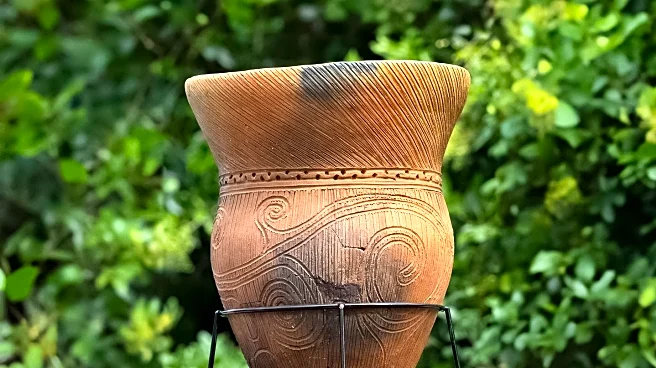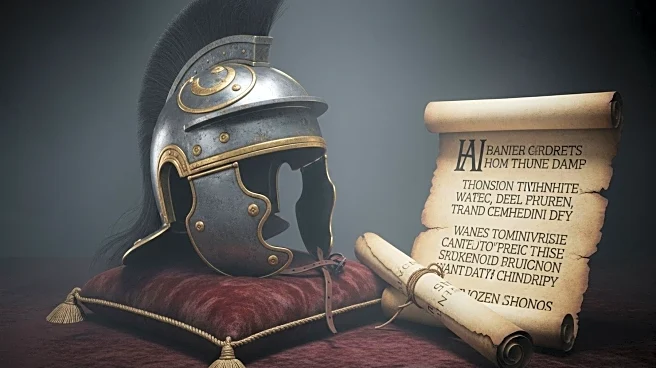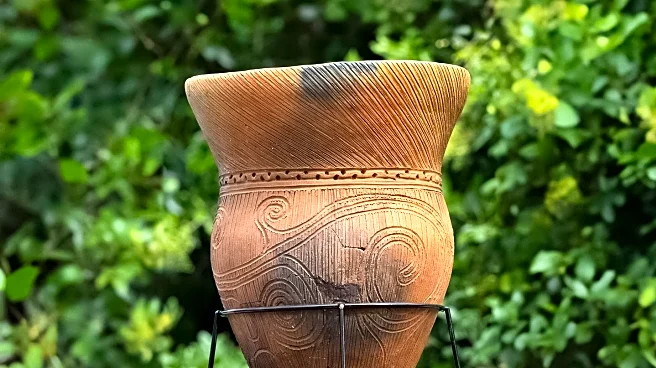What's Happening?
A thrift store in Canada discovered that a collection of rings and medallions it was selling for about 20 US dollars each were actually ancient artifacts. The store reached out to Sabrina Higgins, an archaeology professor at Simon Fraser University, who identified some of the items as potentially originating from the Roman Empire, dating back to the fourth century. The collection, consisting of 11 rings and two medallions, appears to be an eclectic mix from different times and places. The origins of the items remain unclear, and there are concerns about whether they were looted or illegally removed from their country of origin.
Why It's Important?
The discovery of ancient artifacts in a thrift store highlights the potential for significant historical items to be overlooked and undervalued. It underscores the importance of expert evaluation in identifying and preserving cultural heritage. The case raises ethical questions about the provenance of artifacts and the responsibilities of sellers and collectors in ensuring items are legally and ethically acquired. The involvement of an academic institution in studying the artifacts provides an educational opportunity for students and the public to learn about ancient history and the complexities of artifact ownership.
What's Next?
The artifacts will be housed in Simon Fraser University's archaeology museum for further study. If it is determined that the items were stolen or illegally obtained, efforts will be made to return them to their country of origin. The university plans to incorporate the artifacts into a class curriculum, allowing students to engage with the ethical and historical aspects of artifact collection. The thrift store's involvement in the discovery may lead to increased awareness and vigilance in identifying potentially significant items in second-hand markets.
Beyond the Headlines
The case highlights the ethical considerations surrounding the collection and sale of historical artifacts. It raises questions about the responsibilities of individuals and institutions in preserving cultural heritage and the potential for significant items to be lost or misidentified in everyday settings. The discovery also emphasizes the role of academic institutions in bridging the gap between public interest and scholarly research, fostering a deeper understanding of history and cultural preservation.












